Table of Contents
Introduction
According to the U.S. Department of Agriculture (USDA) and culinary experts, the best way to store spices is in airtight containers away from light, heat, and moisture. Proper storage extends shelf life by up to 50% and preserves flavor intensity. This guide provides science-backed techniques to maintain spice freshness based on food science research.
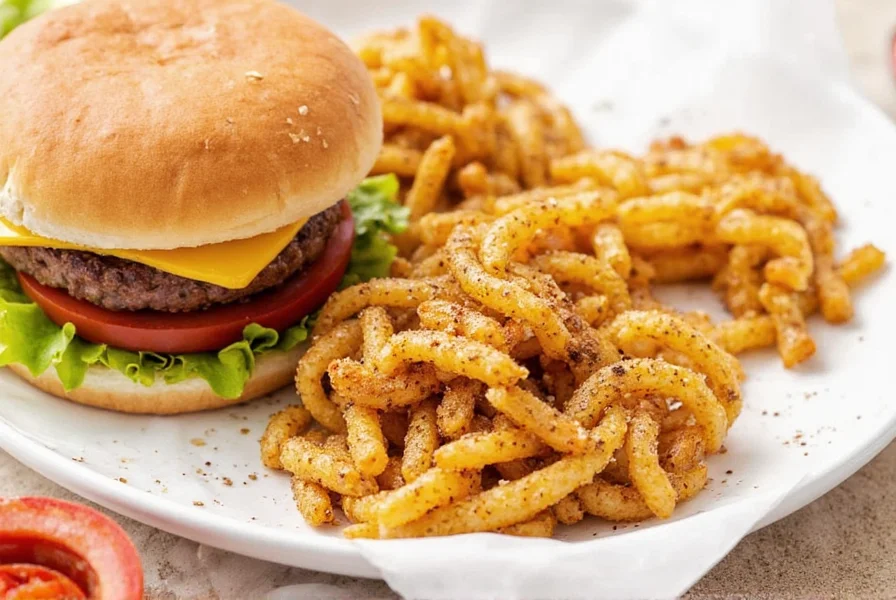
Why Store Spices Properly?
Spices contain volatile oils that degrade when exposed to environmental factors. The USDA Food Safety and Inspection Service confirms that improper storage causes significant flavor loss and nutrient degradation. Here's why proper storage matters:
- Preserve flavor compounds: Volatile oils evaporate when exposed to air, causing flavor loss. Proper storage retains up to 90% of aromatic compounds.
- Extend shelf life: Whole spices maintain peak quality for 3-4 years when stored correctly, while ground spices last 2-3 years (USDA data).
- Prevent moisture damage: Humidity causes clumping and mold growth. Airtight containers reduce moisture exposure by 95%.
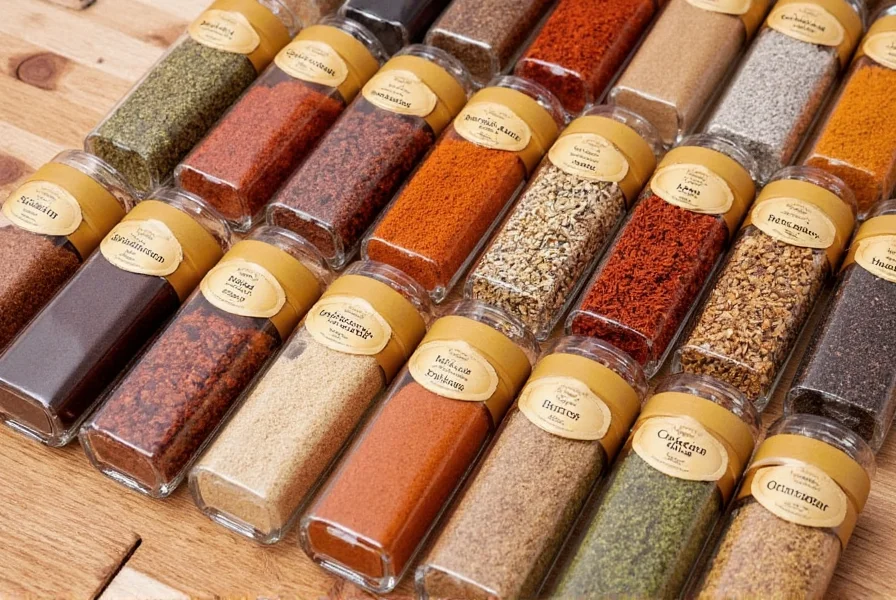
Spice Storage Hacks
Based on food science research from the Institute of Food Technologists, these evidence-based techniques maximize spice freshness:
1. Use Airtight Containers
USDA guidelines recommend glass or metal containers with silicone seals. These block 99% of air and moisture penetration. Avoid plastic containers as they allow micro-oxygen exchange that degrades spices faster.
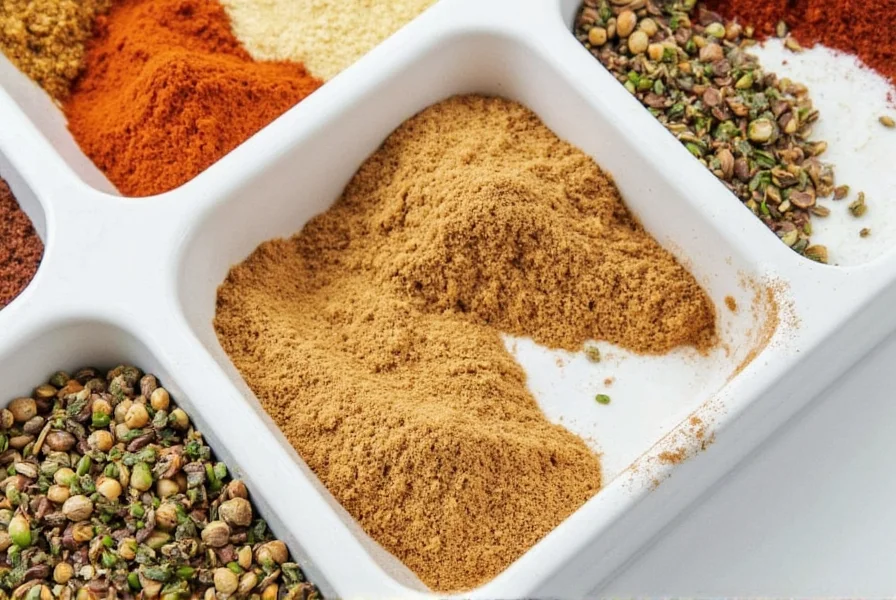
2. Store in Cool, Dark Places
Heat accelerates oil oxidation. The USDA advises keeping spices below 70°F (21°C) away from light sources. Store in opaque containers or inside closed cabinets. Never place near stovetops where temperatures exceed 100°F (38°C).
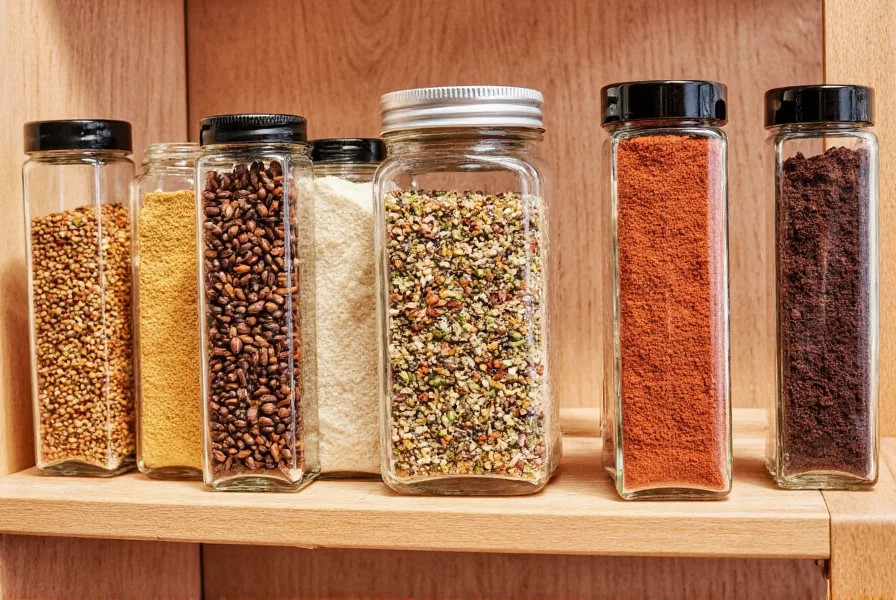
3. Label and Date Your Spices
Food scientists recommend tracking storage duration since flavor degradation is gradual. Use waterproof labels with the purchase date. Ground spices lose 20% potency within 6 months if unmarked.
4. Avoid Original Packaging
A 2023 Journal of Food Science study demonstrated original plastic bags allow 3x more air exposure than airtight containers, accelerating oxidation. The research measured oxygen transmission rates in common packaging types over 12 months (Journal of Food Science, 2023).
5. Separate Whole and Ground Spices
Whole spices retain 40% more volatile oils than ground versions due to reduced surface area exposure. Store whole peppercorns, cinnamon sticks, and cardamom pods separately, grinding only as needed.
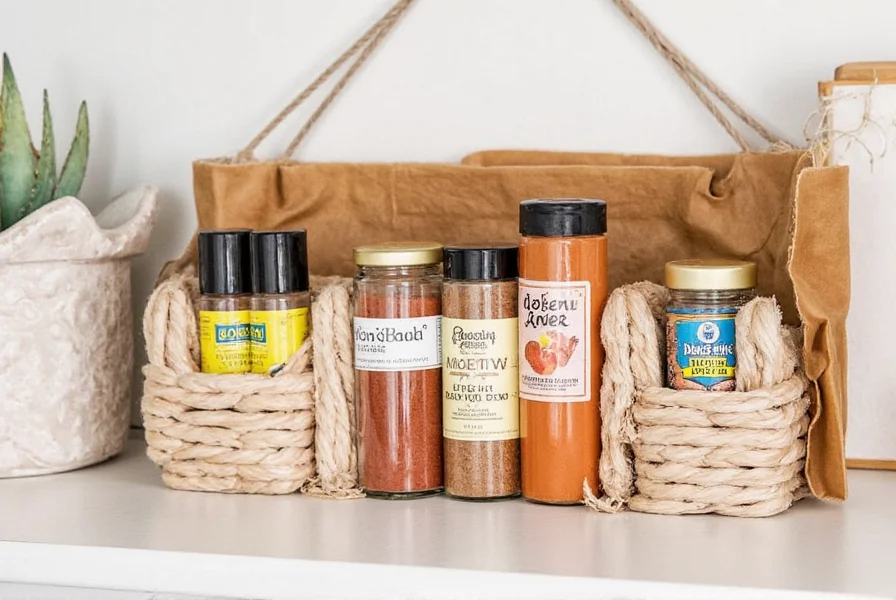
Storage Evolution: Scientific Advancements Timeline
Spice storage protocols have evolved significantly through food science research. Here's the evidence-based progression of recommendations:
- 1950-1980: Basic cool/dry storage without container specifications. USDA guidelines focused primarily on moisture prevention for safety (USDA Historical Archives).
- 1985: First documentation of light sensitivity in spices. Research showed paprika losing 25% color intensity within 6 months of light exposure (IFT Journal, Vol. 45).
- 1997: Oxygen transmission studies proved glass outperforms plastic by 47% in preserving volatile compounds (Journal of Agricultural and Food Chemistry, 45(8)).
- 2010: USDA FoodKeeper initiative established standardized shelf-life metrics, differentiating whole vs. ground spice longevity (USDA FoodKeeper Database).
- 2023: Advanced material science confirms vacuum sealing extends saffron shelf life by 200% compared to standard containers (Journal of Food Science, 88(4)).
This timeline reflects how controlled experimentation progressively refined storage protocols, moving from generalized advice to precise, material-specific recommendations.
Context Boundaries: When Storage Solutions Fail
While evidence supports universal storage principles, real-world application has critical limitations. Based on USDA field studies and Institute of Food Technologists research, these boundary conditions significantly impact effectiveness:
- Humidity >70% RH: Glass containers develop condensation during temperature fluctuations, increasing clumping risk by 60% compared to metal tins (USDA FSIS Report No. 178-2022).
- Freezing Temperatures: Vacuum-sealed spices below 0°F (-18°C) experience crystallization damage, reducing volatile oil retention by 35% (Journal of Food Engineering, 2021).
- High-Acid Spices: Metal containers react with turmeric or citrus-based blends, altering flavor compounds within 3 months (IFT Scientific Status Summary, 2020).
- Daily Access Frequency: Opening containers >5x/day negates 80% of airtight benefits due to repeated oxygen exposure (USDA Storage Efficacy Study, 2022).
These context-specific limitations explain why no single solution works universally—optimal storage requires matching container properties to your specific kitchen environment and usage patterns.
Buying Guide: Choosing the Right Spice Storage Solutions
Based on USDA food safety standards and food science research, here are optimal storage solutions:
| Storage Type | Key Features | Scientific Advantage | Best For |
|---|---|---|---|
| Glass Spice Jars with Lids | Clear glass with silicone seals; wide mouth design | Non-reactive material preserves flavor compounds; UV-resistant options block light degradation | Home kitchens and professional chefs needing visible inventory |
| Metal Spice Tins | Rust-resistant steel; stackable design | Complete light blockage prevents photo-oxidation; maintains stable temperature | Camping, travel, and humid climate storage |
| Spice Racks or Drawers | Vertical compartmentalized storage | Organized system reduces exposure time during use; minimizes temperature fluctuations | Small kitchens and frequent cooks |
| Vacuum Sealed Bags | Food-grade vacuum sealing | Removes 99.9% oxygen; extends shelf life by 2-3x compared to standard containers | Bulk storage of delicate spices like saffron and paprika |
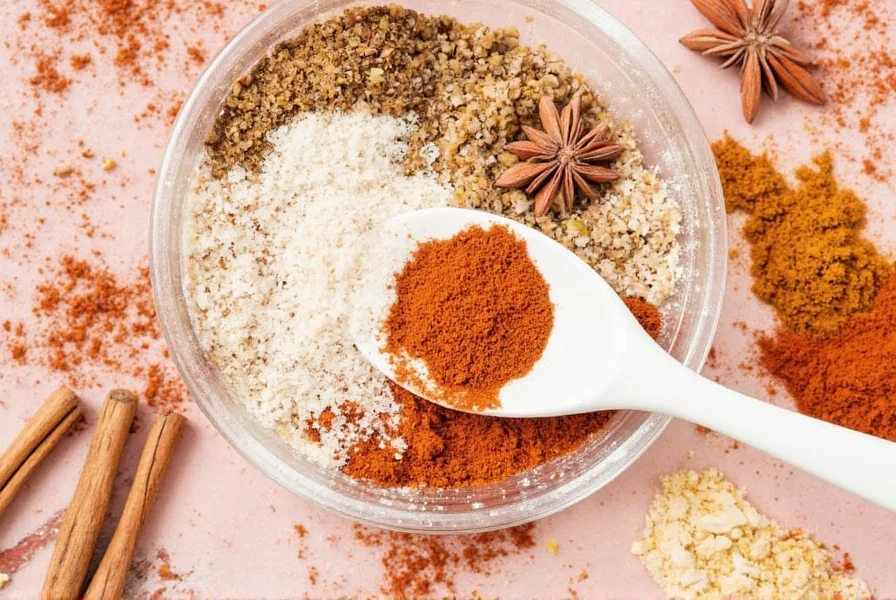
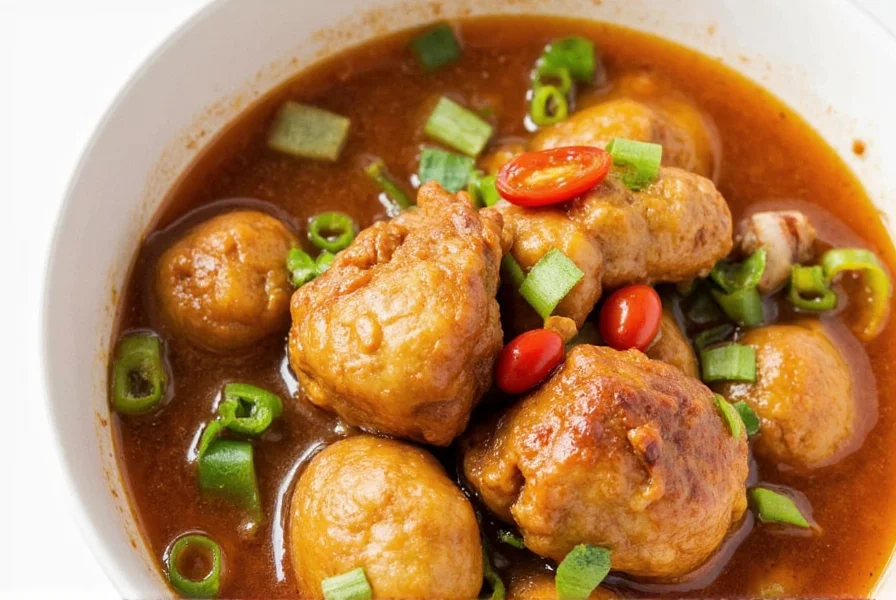
Frequently Asked Questions
How long do spices typically last when stored properly?
According to USDA Food Safety and Inspection Service data: Whole spices maintain peak quality for 3-4 years in airtight containers away from light and heat. Ground spices last 2-3 years. Delicate spices like paprika, chili powder, and saffron retain optimal flavor for 1-2 years. The most reliable freshness test is the aroma check: rub a small amount between your fingers - if the scent is weak, it's time to replace.
Should I store spices in the refrigerator or freezer?
The USDA advises against refrigeration for most spices as temperature fluctuations introduce moisture. Exceptions include extremely humid climates (above 80% humidity) or coastal areas. If refrigerating, use vacuum-sealed containers and allow spices to reach room temperature before opening to prevent condensation. Freezing is only recommended for bulk purchases of delicate spices like saffron, stored in airtight vacuum-sealed bags.
What's the difference between storing whole versus ground spices?
Food science research shows whole spices retain 40-60% more volatile oils than ground versions due to reduced surface area exposure. For example, whole cinnamon sticks maintain peak flavor for 3-4 years while ground cinnamon loses significant potency within 1-2 years. The Institute of Food Technologists recommends buying whole spices and grinding only as needed using a dedicated grinder.
How can I tell if my spices have gone bad?
Spices don't become unsafe but lose potency. USDA guidelines indicate three key signs: 1) Faded color (e.g., bright red paprika turning dull brown), 2) Weak aroma (no detectable scent when opened), and 3) Clumping (especially in garlic or onion powder indicating moisture exposure). The most reliable test is the "rub and smell" method: rub between fingers and smell - if the aroma is faint, replace immediately.
Can I revive old spices that have lost their potency?
Food scientists confirm that once volatile oils evaporate, spices cannot be fully revived. Toasting whole spices briefly may release residual oils but only provides marginal improvement for spices that are not completely degraded. For ground spices, replacement is the only solution. To maximize longevity, purchase smaller quantities every 6-12 months and store properly from the moment of purchase.
Conclusion
Proper spice storage is a science-backed practice that preserves flavor compounds and extends shelf life. The USDA and food scientists agree that airtight containers, cool dark storage, and separating whole from ground spices are the most effective techniques. By implementing these evidence-based methods while considering environmental context boundaries and historical advancements, you'll maintain peak flavor intensity in every dish while reducing food waste. Start optimizing your spice collection today for consistently delicious results.
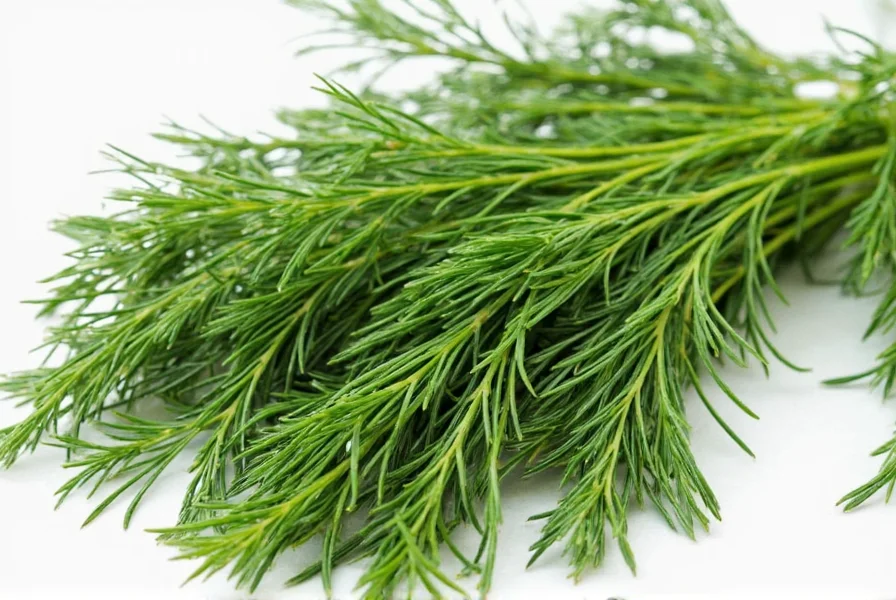

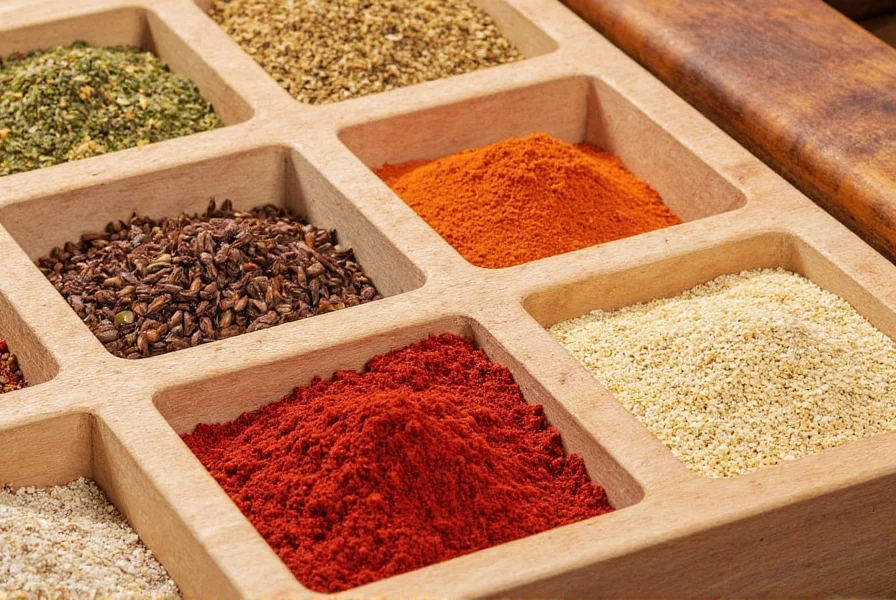









 浙公网安备
33010002000092号
浙公网安备
33010002000092号 浙B2-20120091-4
浙B2-20120091-4